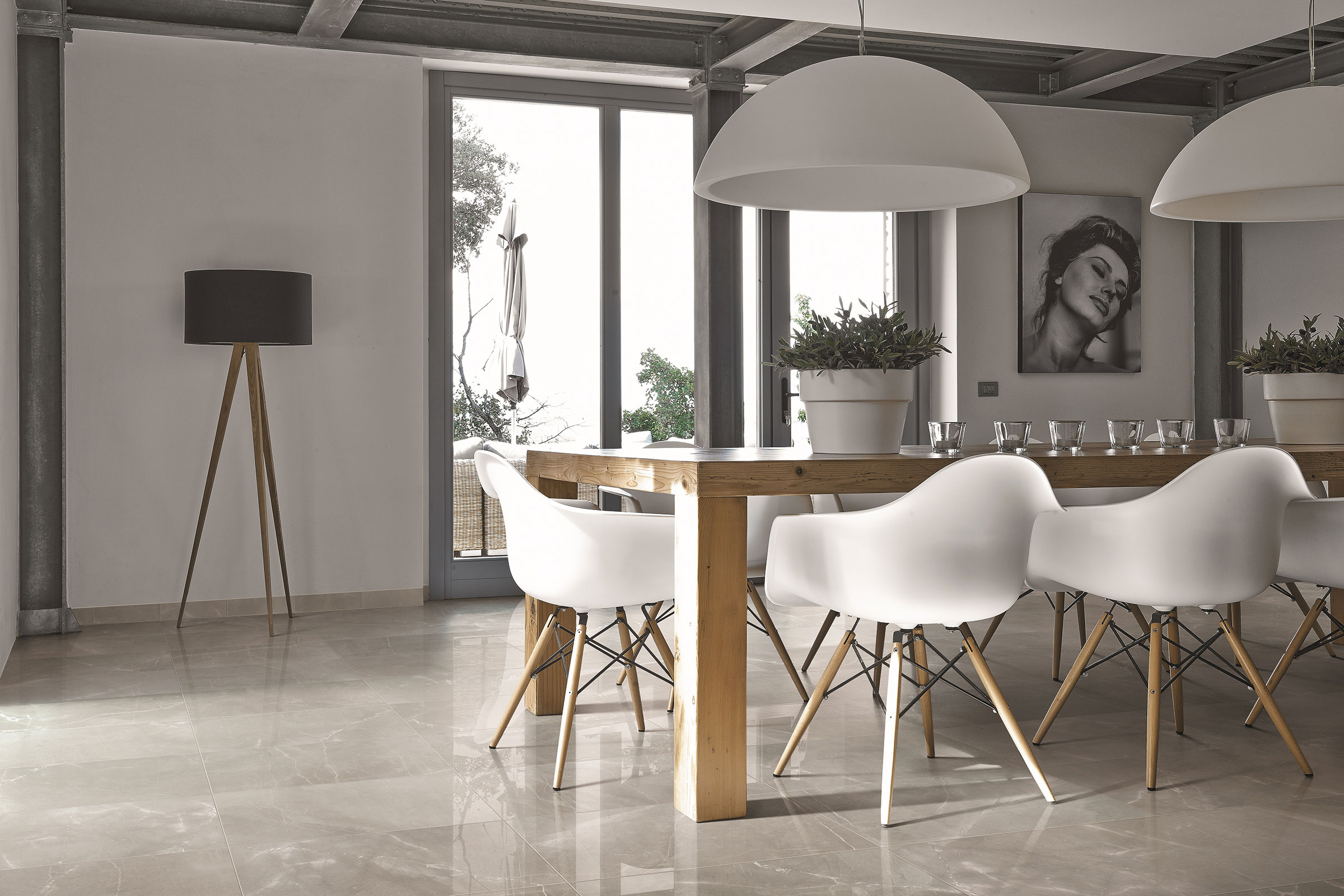Story at a glance:
- The market demand for ceramic and porcelain tile has increased since 2018.
- Porcelain tile can help support a circular economy.
- Installing porcelain tiles can save energy in both residential and public spaces.
Porcelain tile is certainly not a new building material—porcelain tile was first used in China in the 15th century—but it has had a recent resurgence. The demand for tile flooring has grown steadily in the residential market since 2018, and according to a market forecast done by Transparency Market Research, this trend is likely to continue. The global ceramic and porcelain tile market is anticipated to expand at a CAGR of 5.5% and reach a value of $79 billion by 2027.
As demand for tile products increases, it’s important to understand the benefits of tile flooring in both residential and commercial applications.
Let’s explore some of the benefits this versatile material has to offer.
1. It’s healthy.
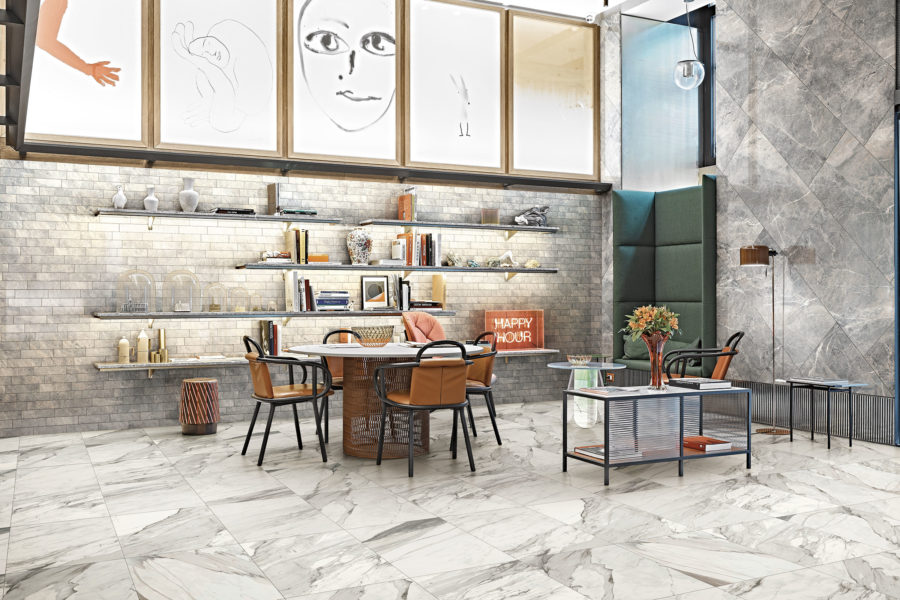
The Epic collection (seen on floors, side wall, and back wall) comes in four sizes and four colors in bullnose and mosaic options. Photo courtesy of MILE®stone
Tile flooring supports healthy spaces in a variety of ways. Research at Clemson University found that porcelain tile did not support mold growth. This is due to porcelain tile containing no available carbon or volatile organic compounds (VOCs). When considering what is known about the toxicity and side effects of mold spores—especially in kitchen and bathroom settings—it’s easy to see why porcelain tile is an ideal choice.
Porcelain tile is also made of natural materials like clay, sand, and feldspar. These materials used alongside modern glazes result in a tile containing no Red List chemicals. The Red List is a compilation of “harmful to humans” chemicals compiled by the International Living Future Institute as part of its Living Building Challenge. Products containing Red List chemicals cannot be used in buildings achieving their Living Building designation.
2. It’s sustainable.
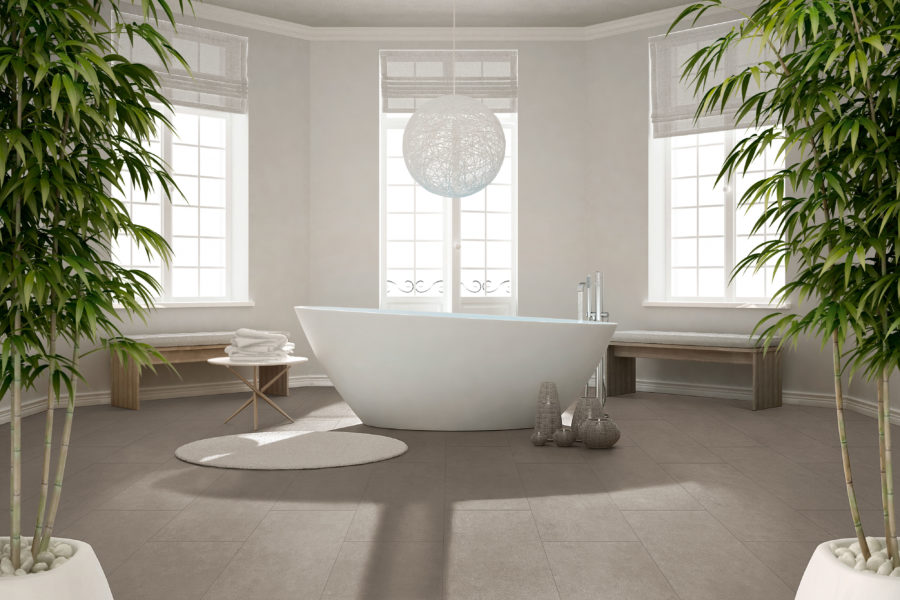
Photo courtesy of MILE®stone
One of the biggest benefits of tile flooring is its sustainability. “Modern porcelain tile manufacturing employs a variety of sustainable practices, and the installed product has attributes that contribute to the sustainability of the building where they are installed,” Don Haynes, environmental and sustainability manager for Florim USA, wrote in a previous gb&d contribution. “Common sustainability efforts in the manufacturing process include high scrap recycling rates, use of offsite recycled material, water reuse, and efficient use of energy (natural gas and electricity).”
The installation of porcelain tile can also support sustainability efforts by saving energy. The combination of tile, mortar, grout, and backer board provides a thermal mass, which reduces peak heating and cooling demands and helps moderate temperature swings. This means less work for the HVAC system and more energy savings.
Florim USA and the company’s MILEstone brand are also examples of how the tile industry is working to reduce its carbon footprint. “Immediate actions consist of participation in the carbon offset market to be able to manufacture carbon-neutral products and energy efficiency efforts to reduce the current impact,” Haynes says. “Longer-term projects like solar cell installation, waste heat recovery and reuse, and fuel swapping are under consideration both domestically and internationally. With advances in manufacturing efficiency, fuel swapping, and transportation electrification, there exists the possibility for dramatic carbon reductions in the porcelain tile industry.”
3. It’s easy to clean.

Here the Epic collection is seen in Dolomite in polished hexagon mosaic on the walls and in Apuano in matte hexagon mosaic on the floors. Photo courtesy of MILE®stone
Both residential and commercial spaces need to consider a material’s upkeep when it comes to application. Luckily, porcelain tile is one of the easiest surfaces to maintain as it doesn’t require harsh chemicals for cleaning. Since porcelain tile doesn’t support microbial growth, clean water is enough to get the job done. This reduces chemical exposure as well as prevents the larger environmental impacts of the manufacture and transport of cleaning products.
4. It’s recyclable.
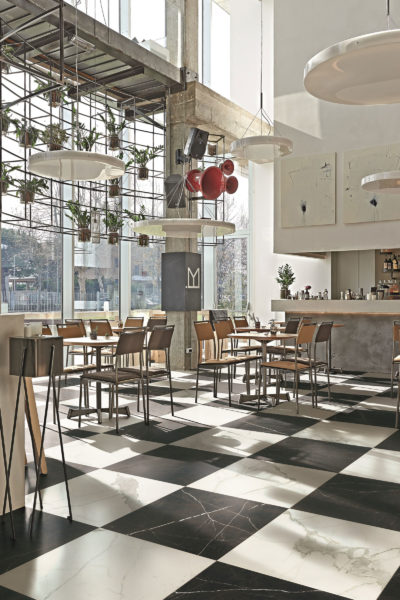
Photo courtesy of MILE®stone
Porcelain tile can be made of recycled materials and is 100% recyclable. Florim USA and MILEstone products are ideal examples of recycled tile at work. Florim USA product lines contain 20% to 40% recycled, pre-consumer material as well as 3% post-consumer recycled content from various recycling facilities.
“Recycled content is a significant element in porcelain tile’s sustainability portfolio. To support this, many porcelain tile manufacturers are active participants in the circular economy,” says Haynes. “With porcelain tile’s use of recycled materials, long life cycle, and ability to be recycled, there is a reduction or elimination of landfill waste. Since sustainability goals and tools are constantly in flux, to be effective their ongoing use requires that sustainability be integral to the manufacturer, not simply a PR or greenwashing tool.”
5. It’s versatile.

Photo courtesy of MILE®stone
The beauty of porcelain tile can be seen in its versatility. Porcelain tile can be used in both indoor and outdoor spaces and can serve as an accent piece, wall covering, tabletop, shelving unit, fireplace, or even a driveway. Porcelain tile can also be made to look like other materials like stone and wood. These finishes can help support biophilic design as the evoke natural materials.
“It’s limitless,” Jana Manzella, senior vice president of sales and business development at Florim USA, previously told gb&d. “We can take any other flooring option like stone or hardwood and make it better. We can mimic the texture and take out the imperfections. The result is beautiful.”
Porcelain tile can be used in a variety of settings because it doesn’t support the spread of flames, is waterproof, and is chemical-free. Tile is also unaffected by salt and other environmental factors when used on a driveway or outdoor patio, and it holds up to freeze/thaw cycles. These properties mean it can be used in ovens, fireplaces, as well as outdoor patios and pools.
“It’s considered to be the most durable flooring product for indoor and outdoor use,” Manzella says. “Most outdoor products eventually pit, chip, or harbor mold and mildew growth. Tile doesn’t. It really is the best long-term solution.”
6. It’s durable.
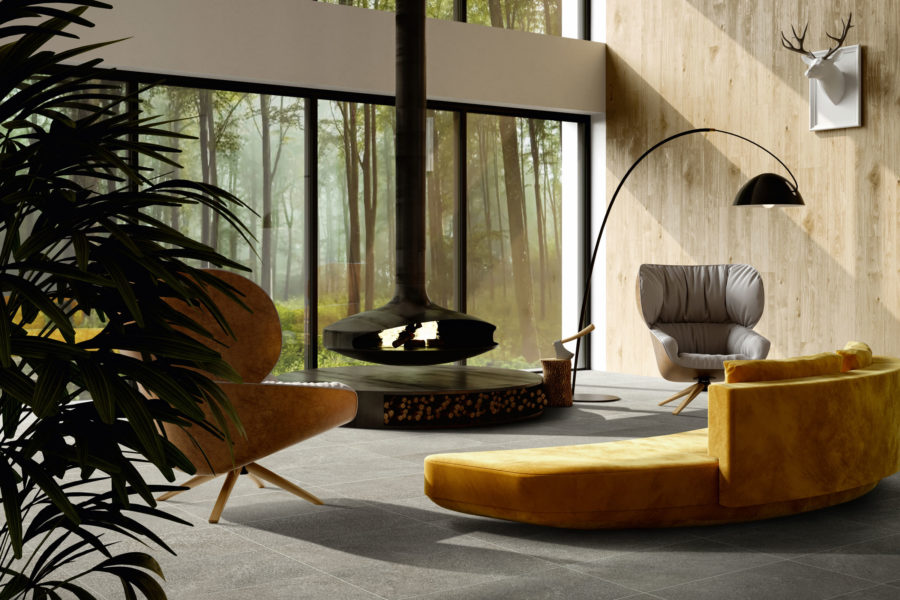
Photo courtesy of MILE®stone
Porcelain tile is also known for its durability and long life cycle. On average, porcelain tile can have an installed life of 60 years versus 10 or 15 years for other flooring types.
“It’s essentially a one-and-done type of product,” Haynes says. MILEstone tiles, unlike some of their counterparts, are fade- and stain-resistant. The tiles are polished with technology that works by filling the pores of the tile so it is impenetrable to any staining agents.
“It doesn’t wear off like other tile products because it’s down in the pores of the tile. It holds the polished finish for the life of the product,” Manzella says.

